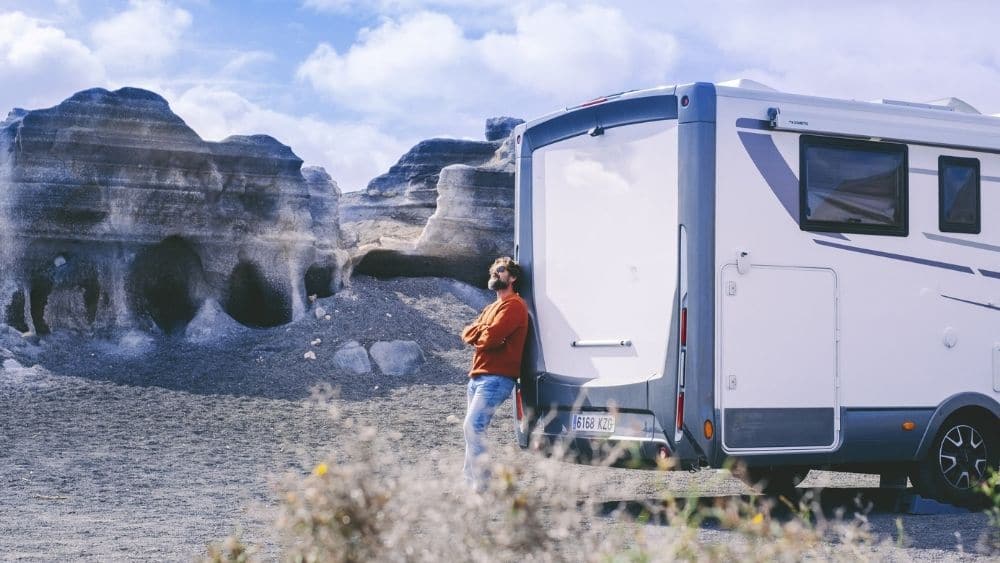
RVs, or recreational vehicles, have recently seen a resurgence in popularity with all the #VanLife influencers these days. So how do these tiny homes on wheels compare with spaces technically classified as tiny homes? What are the pros and cons of each? We will take a look and compare the two types of small space living and how to prepare to live in a small space.
First, as the acronym suggests, RVs are basically recreational spaces on wheels. The term encompasses many different types of vehicles such as motor homes, camper vans, fifth-wheel trailers, and truck campers. These are light, temporary spaces that were designed to be mobile.
Tiny homes, on the other hand, typically look more like houses and are built for long-term accommodation, not to mention it is easier to figure out how to get mail in tiny houses. They are ideal for those downsizing or looking to reduce their carbon footprint. Tiny homes may also have wheels but rarely travel.
The Basics of Downsizing
Spaces with 400-600 square feet or less are technically considered tiny homes, but in the U.S., tiny homes average 225 square feet.
RVs are usually categorized by length, and divided into Class A, B, and C.
Class A – These are, at minimum, 30 feet long by 9 feet wide – or 270 square feet. These vehicles typically come with premium finishes and full-sized bathrooms and kitchens.
Class C – The vehicles are popular for vacation rentals. Their average size is 24 X 8 feet.
Class B – Camper vans fall into this category. These vehicles are designed to be compact and easy to maneuver. Most are built on a van frame and can fit in a regular parking spot. They’re best suited for one or two people.
As RVs have to travel on the road, they cannot be wider than 8 feet 6 inches (around 102 inches) per state and federal laws for most road vehicles. The longest RV available for purchase is the Class A Gulf Stream Constellation, which is right at 45 feet, or 374.85 square feet.
Even if you own the longest RV, it will only be slightly larger than the average tiny home and does not come close to the standard size of a tiny home.
Personalization
The great thing about tiny homes is that they are mostly new builds and can be customized to your personal style and taste. Since you’re decorating a small space, you can ultimately spend less on top-quality finishes and appliances.
New RVs are prebuilt vehicles by established manufacturers. While there are luxury RV manufacturers, they usually follow the standard cookie-cutter exterior and interior appearance (i.e., white background with gray swoops).
Downsizing is not a new concept and those who choose to live in tiny homes generally have sustainability and minimalism at the forefront. Many tiny home builders incorporate sustainability in their designs and boast nifty ways of smart organization. Tiny homes are usually design-centric – there are many wonderful examples of tiny homes built in a range of styles, from Scandinavian, Japanese, Moroccan, Tudor, and more (the list goes on!).
RV Costs vs Tiny Home Costs

According to Cruise America, the cost of buying an RV is as follows: Class A RVs range from $200,000 to $300,000, as they are the largest, nearly as large as a bus. Those in Class B cost between $100,000 to $200,000 and finally, Class C has a price tag of $35,000 to $50,000. Keep in mind, there are also other costs associated with the purchase, such as sales tax, registration, insurance, and maintenance.
Like RVs, tiny homes also vary in price depending on size, quality of finish, and more. The price of a tiny home can range from $20,000 to more than $200,000. Extra fees include zoning laws and homeowners insurance. If you’re thinking about taking out a mortgage for a tiny home, it may not qualify, primarily due to their mobility. So be prepared to have the cash upfront, and be open to a line of credit or another loan.
RVs vs Tiny Homes with Wheels
You may think that only RVs have wheels, but tiny homes often have wheels too! Tiny homes are usually built on a foundation or a trailer. For example, Tiny Heirloom based in Portland custom designs a series of tiny homes on wheels with trailer brakes and highway lighting. If you choose to build a tiny home on wheels, of course you have the option to tow your home to RV campgrounds, visit friends, or drive it across the country. Plus, you’ll always have the option to relocate. Depending on the state, your tiny home on wheels could also be classified as an RV.
Filling the Tank
Increasing gas prices are a major pain point. While many parts of the country may have varying gas prices, the one thing they have in common is that they’re all rising. RVs are large, heavy vehicles, especially with the extra weight of furniture and appliances you’re lugging around. No matter which RV class you buy, the cost of gas is something to keep in mind.
If you own a stationary tiny home, gas is something that you will not have to worry about. Even if you have a tiny home on wheels, you probably won’t be commuting that often so gas wouldn’t be a factor. These are some of the main factors to keep in mind when deciding between a tiny home or an RV. Small spaces allow much more freedom than people may think. Happy shopping, folks!
